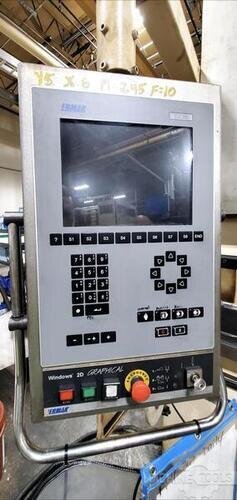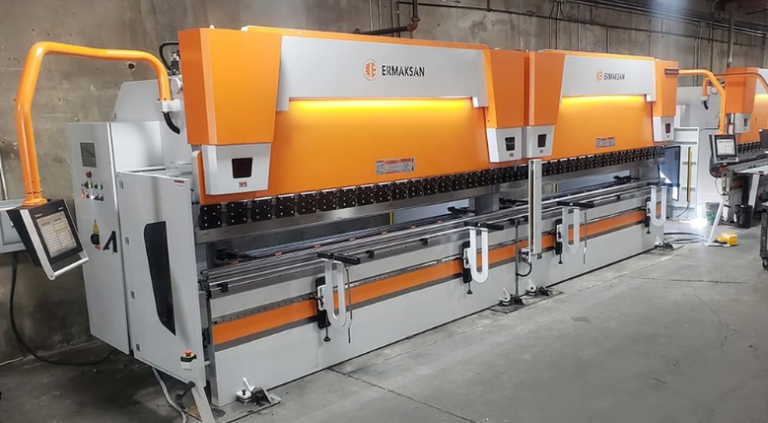I’ve always believed that regular and well-executed maintenance is the backbone of any production line, especially when it comes to beam coping. My journey at Mac-Tech has taught me countless lessons about streamlining these processes and helping clients get the most out of their machines. Each day, I work closely with teams to identify areas where they can improve efficiency and profitability, aiming to tailor my recommendations so they can stay one step ahead in their operations.
My Consultative Guide: Strengthening Beam Coping Care
From my experience, proper beam coping maintenance starts with investing the time to understand your unique equipment setup. I like to walk through facilities alongside clients, asking questions and examining the nuances of their floor layout and production goals. This consultative approach helps me identify what matters most to their success.
After our initial conversations, I carefully lay out a maintenance strategy that addresses each client’s workflow. Flat and tube lasers, beam line robotic coping, press brakes, and tube bending machines often require different levels of care, so we dive into the specifics for each piece of equipment. By breaking down maintenance tasks into manageable steps, I ensure that everyone on the team feels confident in their responsibilities.
I’ve seen clients flourish when they have a solid plan for preventive care. We discuss everything from cleaning methods, lubrication schedules, and part replacement timelines to help them avoid production surprises. In my view, when a facility prioritizes maintenance, the result is smoother operations and happier, more efficient teams.
Partnering with You for Practical Maintenance Solutions
When I work with a new customer, I consider myself part of their team, not just an external consultant. That means sharing insights on how beam coping machines integrate with other manufacturing processes, including press brakes and tube bending lines. By viewing the entire production environment as a whole, we can find ways to reduce downtime and bottlenecks.
My approach involves hands-on training sessions where I walk engineers and operators through the care routines for their machinery. This covers everything from essential checks to deep dives into software updates and advanced calibrations. Building these skills in-house helps clients keep their equipment running at optimal levels, which directly translates to faster turnaround times and cost savings.
I’ve seen time and again how a supportive partnership changes the game for many shops and factories. The more we collaborate on preventative measures and troubleshoot potential pitfalls, the more resilient your systems become. My role is to bring dependable knowledge and a practical maintenance vision, so your team can focus on hitting production targets without worrying about unexpected setbacks.
Boosting Customer Satisfaction with Top Coping Tips
One of the best parts of my job is seeing the long-term benefits that thoughtful maintenance can provide. By focusing on specific coping tips—like ensuring regular alignment checks, monitoring wear indicators, and maintaining proper lubrication—many customers discover significant improvements in productivity. The key is to never treat maintenance as an afterthought.
I’ve helped clients refine their production schedules by fitting maintenance tasks into quiet periods, maximizing efficiency while minimizing disruption. When everyone is clear on when tasks need to happen and why, there’s less downtime and fewer last-minute fixes. This level of organization boosts morale and keeps quality standards high.
Friendliness and clear communication go a long way, too. Many of the relationships I’ve built are grounded in an honest exchange of information. Whether it’s a quick phone call, thorough on-site visit, or video conference, I make myself available to help troubleshoot issues and offer coaching to anyone who needs it.
AFD Plate Drilling Machines
Reliable Strategies That Prolong Beam Coping Machines
I’ve found that proper record-keeping is a cornerstone of effective beam coping maintenance. Logging detailed data on tool usage, part wear, and system alerts helps me track patterns and anticipate issues before they become major problems. Sharing these insights produces a proactive culture that values planning over reaction.
Another reliable strategy is to regularly update software and firmware, especially for units interfacing with advanced lasers or robotic elements. Manufacturers often release patches and improvements that boost performance, and ignoring these can result in missed opportunities for smoother production. I’ve seen small software tweaks lead to significant gains, especially in complex operations involving flat and tube lasers.
Ultimately, the biggest benefit of diligent beam coping maintenance is keeping your operation poised for success. I collaborate with you to integrate best practices, coordinate training, and discuss machine updates that can enhance efficiency. When we work together with a forward-thinking mindset, your beam coping machinery stays at the top of its game.
FAQ Section
Q: How often should beam coping machines be inspected?
I recommend a visual inspection daily and a more thorough check at least once a week. This approach helps catch small issues early, preventing bigger problems down the road.
Q: Can my team handle maintenance, or do we need outside help?
Your team can manage many tasks in-house with the right guidance. I’m here to provide training and support so you feel confident in your internal maintenance routine.
Q: What are some best practices for coping machine lubrication?
I suggest following manufacturer guidelines and using high-quality, compatible lubricants. Regular lubrication schedules and consistent checks keep your system running smoothly.
Q: Is it worth upgrading software for older coping machines?
Absolutely. Software updates often include performance optimizations that can significantly boost efficiency, even on older equipment.
Q: How do I integrate coping maintenance into my overall production schedule?
Collaborate with your team to identify lower-volume periods during the week or month. Scheduling maintenance at these times helps minimize interference with daily output.
I’m fortunate to work with remarkable clients and see their progress firsthand, and I’m here to help in any way I can. By focusing on practical strategies and building a solid maintenance framework, you can keep your beam coping machines running at their finest. And if you’re ready to take the next step or have questions about your current setup, I’m just a message away.
Get Weekly Mac-Tech News & Updates








